Introduction to the Importance of Web Globalization
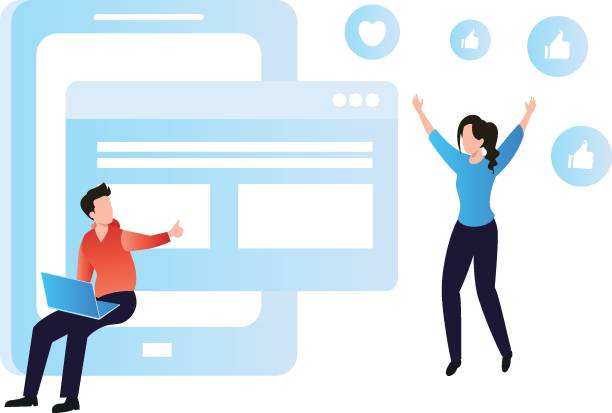
In today’s world, where geographical boundaries have lost their meaning in the digital space, online presence is not limited to a single language.
Multilingual website design emerges as a vital strategy for any business looking to expand its operations in the #global_market and attract #international_audiences.
This approach not only helps to #increase_reach and visibility but also paves the way for deeper connections with users from diverse cultures.
Indeed, ignoring the linguistic needs of potential audiences means losing a significant market share and falling behind global competitors.
A website that can provide content in multiple languages demonstrates a brand’s credibility and professionalism, fostering a sense of trust and closeness with the audience.
This is particularly crucial for companies whose products or services have global potential.
Therefore, the first step towards #globalizing a digital business is careful planning for the implementation of an efficient multilingual website.
This is not just a choice, but a necessity for competing in today’s global arena, helping your website serve as a global communication hub.
Are you bothered by losing customers who visited your site to make a purchase?
RasaWeb is your specialized solution for a successful online store.
✅ Significantly increase your online sales
✅ Build trust and professional branding with customers⚡ Get free consultation from RasaWeb experts!
The Innumerable Benefits of Multilingual Websites
![]()
Multilingual website design is more than a luxury feature; it’s a strategic investment with high returns.
One of its most prominent advantages is increased access to global audiences.
Imagine your website being able to speak the native language of potential customers in different countries; this not only increases the number of visitors but also improves conversion rates.
Users are more inclined to buy from or interact with websites whose content is in their own language.
From an SEO perspective, having a multilingual website can significantly boost your position in international search results.
Search engines prefer websites that offer quality content in multiple languages, provided that their technical implementation is done correctly (using Hreflang tags and appropriate URL structure).
This means more organic traffic from new target markets.
Furthermore, a multilingual website lends international credibility to your brand, showing that you value your global customers.
This approach embraces cultural understanding and respect for diversity, leading to stronger connections and greater customer loyalty.
Ultimately, multilingual website design enables businesses to seize unparalleled growth opportunities in new markets and achieve higher competitiveness.
Technical and Architectural Challenges in Multilingual Website Design
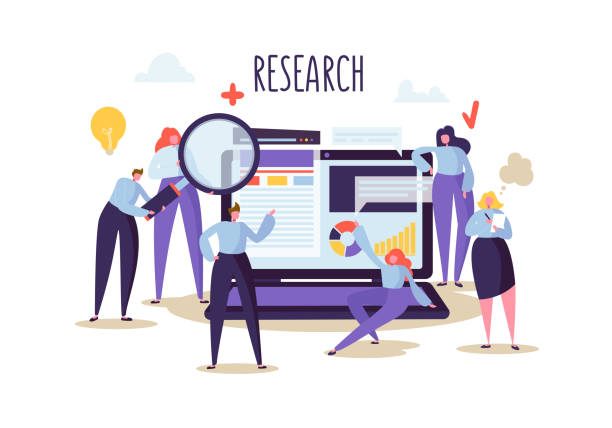
Multilingual website design goes beyond simply translating texts; it involves complex technical and architectural considerations that must be carefully addressed.
One of the first decisions is choosing the appropriate URL structure.
Three main approaches include subdomains (e.g., en.example.com), subdirectories (e.g., example.com/en/), and country-code top-level domains (ccTLDs, e.g., example.de).
Each of these options has its own advantages and disadvantages in terms of SEO, hosting, and management.
For instance, ccTLDs send a stronger signal of regional targeting to search engines, but managing multiple domains can be complex.
Correct use of Hreflang tags is crucial for search engines to identify different language versions of a page and show users the appropriate version, preventing duplicate content penalties.
Furthermore, the Content Management System (CMS) must support multilingual content.
This includes managing translation strings, images, media files, and language-related data.
Database design should efficiently allow for storing and retrieving content in multiple languages.
Some solutions include separate tables for each language, or using additional columns for each language within a single table.
Choosing the method for detecting user language (based on IP, browser settings, or manual selection) is also important to provide an optimal user experience.
Additionally, the issue of Right-to-Left (RTL) or Left-to-Right (LTR) languages and their impact on User Interface (UI) and User Experience (UX) design should not be overlooked.
Overall, a successful multilingual website requires precise technical planning and deep knowledge of information architecture.
Below is a comparative table of different URL structures for multilingual website design:
| URL Structure | Example | Advantages | Disadvantages |
|---|---|---|---|
| Subdomain | en.example.com | Strong SEO separation, easy hosting | Requires building new domain authority for each subdomain |
| Subdirectory | example.com/en/ | Passes main domain authority, easier management | May appear less localized |
| Country-code Top-Level Domains (ccTLD) | example.de | Strong regional signal, high trust | Higher cost, complexity in management and reporting |
SEO Optimization for Multilingual Websites: Key Tips

Search Engine Optimization (SEO) in a multilingual environment has its own complexities and specific considerations that go beyond mere keyword translation.
For a successful multilingual website design, keyword research must be conducted separately for each language, taking into account cultural and dialectal differences.
A keyword effective in one language might have a different meaning or not be searched for at all in another.
Direct translation is often insufficient; localization of keywords and content is necessary.
Correct use of Hreflang tags is one of the most important technical SEO factors for multilingual websites.
These tags help Google and other search engines identify different language versions of a page and display the appropriate version to users based on their language and geographical location, which prevents duplicate content issues.
Furthermore, the URL structure (as mentioned earlier, subdirectories, subdomains, or ccTLDs) plays a crucial role in international SEO.
Each option sends a different message to search engines regarding the geographical and linguistic targeting of your website.
Meta tags, meta descriptions, and title tags should be localized for each language and include relevant keywords for that language.
Also, creating high-quality and relevant content for each language is of paramount importance.
Content that is appealing to one market may not be suitable for another.
Link building must also be done carefully; attracting backlinks from reputable and relevant websites in each country or linguistic region can increase your site’s authority in those markets.
In general, SEO for multilingual sites is an ongoing process that requires continuous monitoring and optimization to ensure visibility in international markets.
Are you bothered by losing customers who visited your site to make a purchase?
RasaWeb is your specialized solution for a successful online store.
✅ Significantly increase your online sales
✅ Build trust and professional branding with customers⚡ Get free consultation from RasaWeb experts!
Content and Translation Management in Multilingual Websites
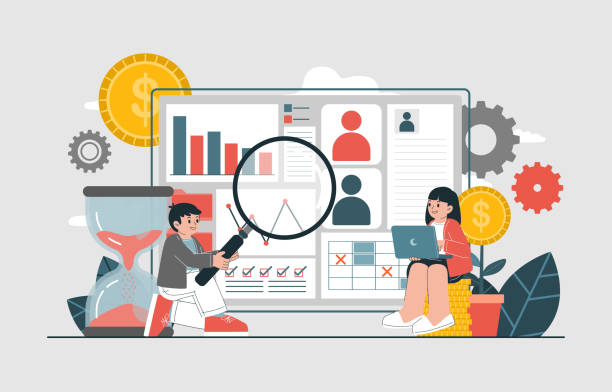
One of the biggest challenges in multilingual website design is efficient content and translation process management.
Choosing a Content Management System (CMS) that supports strong multilingual capabilities is crucial.
Systems like WordPress with plugins such as WPML or Polylang, Drupal with advanced localization modules, and Joomla all offer tools for managing translations, separating languages, and displaying correct content to users.
Headless CMS systems are also modern options that provide greater flexibility for developers.
Regarding the translation process, various options exist.
Human translation, though more expensive and time-consuming, yields the most accurate and high-quality results, capable of understanding cultural nuances and specific idioms.
For sensitive and important content, this method is preferred.
Machine translation (like Google Translate) can be fast and inexpensive for large volumes of content or less critical content, but it usually requires editing and review by a human translator (Post-Editing) to ensure accuracy and natural flow of the text.
Translation Memory (TM) tools and glossaries can also accelerate the process and help maintain terminological consistency over time.
Implementing an effective translation workflow that includes planning, translation, review, and publication stages is essential for the success of a multilingual website.
This process not only helps maintain quality but also increases team efficiency.
Ultimately, managing a multilingual portal requires coordination among various teams, including content, developers, and SEO specialists.
User Experience and Localization Beyond Translation

Multilingual website design is not merely about translating words; it’s about fully localizing the user experience for each culture and language.
Localization, beyond linguistic translation, involves adapting content and design to the norms, interests, and cultural expectations of the target audience.
This means paying attention to details such as date and time formats, currency units, measurement systems, addresses, and even colors and symbols, which may carry different meanings in various cultures.
For example, the color red symbolizes love and passion in some cultures, while in others it might signify danger or prohibition.
The User Experience (UX) should be designed to feel natural and familiar to users in each region.
This includes text direction (Right-to-Left for Persian or Arabic, Left-to-Right for English), page element arrangement, and visual design.
Using images and videos that align with the local culture and avoid stereotypes can help establish a deeper connection with the audience.
Furthermore, legal and privacy considerations in each country must be addressed; cookie policies, terms of use, and privacy policies should be in the local language and comply with the laws of that region.
A successful multicultural website is one where users feel it was designed for them, rather than merely translated.
This level of localization builds trust and significantly increases user engagement, resulting in greater success in global markets and helping your website function as an effective communication platform.
Popular Tools and Platforms for Multilingual Website Design

To facilitate the multilingual website design process and its content management, various tools and platforms are available, each with its own features and advantages.
Choosing the right tool depends on project needs, budget, and the development team’s expertise.
Content Management Systems (CMS) like WordPress, Drupal, and Joomla, with their rich ecosystems of plugins and modules, are among the most popular choices.
WordPress, with plugins such as WPML and Polylang, provides easy translation management.
Drupal, due to its flexible structure and built-in localization capabilities, is suitable for large and complex projects.
E-commerce platforms like Shopify and Magento also offer multilingual plugins and features for online stores.
In addition to CMSs, Cloud Translation Services such as Google Cloud Translation API and Microsoft Translator API provide real-time machine translation, which can be useful for dynamic or large-scale content, although they typically require human review.
Web development frameworks like React, Angular, and Vue.js, with their i18n (internationalization) libraries and plugins, enable developers to build multilingual websites from scratch.
Furthermore, specialized Translation Management Systems (TMS) like Smartling or PhraseApp optimize the collaboration process between translators, developers, and content managers.
The correct selection of these tools can significantly enhance the efficiency and quality of the multilingual website design process.
These platforms play a key role in building an effective multilingual portal.
Below is a table of some popular tools for implementing multilingual websites:
| Category | Tool/Platform Name | Key Multilingual Features |
|---|---|---|
| CMS (WordPress) | WPML (WordPress Multilingual Plugin) | Translation of posts, pages, categories, menus, Hreflang support, plugin compatibility |
| CMS (WordPress) | Polylang | Simple UI, content and string translation, RTL compatibility, free and open-source |
| CMS (Comprehensive) | Drupal | Powerful built-in localization capabilities, extensible modules, suitable for large projects |
| Cloud Translation Service | Google Cloud Translation API | Powerful machine translation, support for multiple languages, application integration |
| TMS (Translation Management System) | Smartling | Automated translation workflow, translation memory, glossary, translator team management |
Testing and Maintenance of Multilingual Sites: Quality Assurance

After completing the multilingual website design and implementation phases, testing and maintenance are equally vital.
A multilingual website, due to its linguistic and cultural complexities, requires a more comprehensive approach to quality testing.
Functional testing must be conducted in each language to ensure that all functionalities (forms, links, search, shopping cart, etc.) work correctly.
UI/UX testing is essential for each language; this includes checking element layout, fonts, text direction (RTL/LTR), and responsiveness across different devices and browsers.
Most importantly, there is linguistic and cultural testing.
This testing should be performed by native translators or individuals familiar with the target culture to ensure the accuracy of translations, appropriate tone, and the absence of any errors or cultural insensitivities.
A word or phrase might be harmless in one culture but have an offensive or inappropriate meaning in another.
Furthermore, the performance of multilingual SEO must also be reviewed; are Hreflang tags correctly implemented? Do pages in different languages appear in their respective search results?
Maintaining a multilingual site is an ongoing process.
Content should be regularly updated, and any changes to the original content must be quickly translated and published in all languages.
This also includes security updates, bug fixes, and performance improvements.
Monitoring traffic, conversion rates, and user behavior in each language can provide valuable insights for future optimizations.
Thus, a successful multilingual website requires a continuous cycle of development, testing, publishing, and feedback to ensure a flawless user experience across all markets.
Did you know that customers’ first impression of your company is your website? Multiply your business’s credibility with a powerful corporate site from RasaWeb!
✅ Custom and eye-catching design tailored to your brand
✅ Improved user experience and increased customer attraction
⚡ Get a free consultation!
The Future of Multilingual Website Design: AI and Beyond
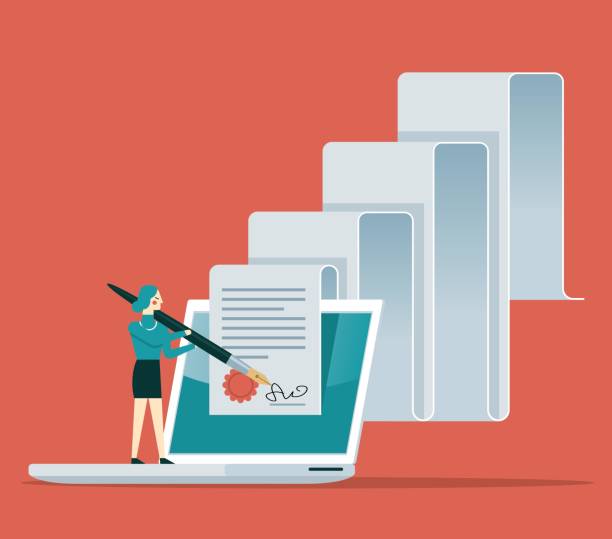
The future of multilingual website design is rapidly evolving, and emerging technologies, especially Artificial Intelligence (AI) and machine learning, will play a pivotal role in these changes.
While traditional machine translation had limitations in accuracy and cultural understanding, advancements in neural networks and Natural Language Processing (NLP) have led to powerful machine translation models that can provide much higher-quality translations.
This creates significant potential for automating large parts of the website content translation process, especially for high-volume news or descriptive content.
Beyond translation, AI can move towards personalized multilingual user experiences.
Imagine a website that not only delivers content in the user’s language but also adjusts the tone, style, and even product recommendations based on their behavioral data and cultural preferences in that specific language.
This level of personalization will significantly increase engagement and conversion rates.
Voice search in different languages is also a growing area that impacts multilingual website design; websites must be optimized to respond to voice queries in various languages.
Furthermore, Augmented Reality (AR) and Virtual Reality (VR) may require presenting multilingual content in new and interactive formats.
These developments indicate that multilingual website design in the future will become even more intelligent, personalized, and integrated, helping businesses connect with their global audiences in unprecedented ways.
Conclusion: A Big Step in Business Globalization
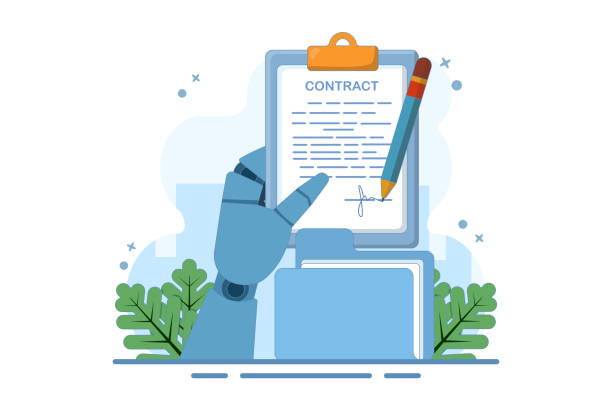
In summary, multilingual website design is no longer an optional choice for businesses seeking global growth and expansion; it is a strategic necessity.
As explored in this article, from its innumerable benefits such as increased access to global markets and improved international SEO, to complex technical challenges and the need for cultural localization, every aspect of this process requires meticulous planning and skilled execution.
Investing in the design and development of a multilingual website not only allows you to break down language barriers and connect with more audiences worldwide but also enhances your brand’s credibility and demonstrates that you care about the diverse needs of your customers.
By choosing the right tools, correctly implementing international SEO principles, efficiently managing content, and focusing on localized user experience, you can create a powerful digital platform that serves as a gateway to new opportunities in the global economy.
Ultimately, a multilingual website is not just a marketing tool; it is a reflection of a business’s global vision, ready to speak to all cultures and languages and pave its way to success in today’s and tomorrow’s world.
This approach means building a powerful multilingual portal that can take your business to new horizons.
Frequently Asked Questions
| Question | Answer |
|---|---|
| 1. What is multilingual website design? | The process of creating a website whose content is available in several different languages so that users from around the world can interact with the site in their own language. |
| 2. Why should I make my site multilingual? | To expand the market, attract international audiences, improve SEO in global search results, and enhance brand credibility and professionalism. |
| 3. What are the methods for implementing a multilingual site? | Using subdomains (e.g., fa.example.com), subdirectories (e.g., example.com/fa/), URL parameters (e.g., example.com?lang=fa), or country-code domains (e.g., .ir, .de). |
| 4. Is multilingual site SEO different? | Yes, it requires international SEO strategies such as using the hreflang tag, appropriate URL structure for each language, and keyword research for each language. |
| 5. What should be considered when choosing languages? | Language selection should be based on the target market, audience demographics, and current website traffic analysis data. |
| 6. What are common problems in multilingual website design? | Issues related to SEO, translation quality, content management, Right-to-Left (RTL) and Left-to-Right (LTR) support, and user experience. |
| 7. What is the role of CMS in multilingual sites? | Modern Content Management Systems (CMS) (such as WordPress with multilingual plugins or Drupal) offer built-in features or powerful plugins for easy content management in multiple languages. |
| 8. How should content translation be done? | Translation should be done by native and professional translators, not just machine translation, to ensure appropriate tone, culture, and local idioms are respected. |
| 9. How is language changed on multilingual sites? | Typically, a Language Switcher is used in the header or footer of the site, allowing users to easily select their desired language. |
| 10. Is responsive design important for a multilingual site? | Yes, responsive design ensures that the site is displayed correctly on any device (mobile, tablet, desktop), which is crucial for international user access and SEO. |
And other advertising services from RasaWeb Advertising Agency
Smart Advertising Campaign: An innovative platform for improving SEO ranking with precise audience targeting.
Smart Sales Automation: An effective tool for increasing sales by customizing user experience.
Smart Marketplace: An effective tool for attracting customers through marketing automation.
Smart Brand Identity: A specialized service for growing click-through rates based on attractive UI design.
Smart Digital Advertising: Professional optimization for campaign management using proprietary programming.
And over hundreds of other services in the field of internet advertising, advertising consulting, and organizational solutions
Internet Advertising | Advertising Strategy | Advertorials
Sources
Multilingual SEO Tips for Increased Reach
Advantages of Having a Multilingual Website
Best Practices in Multilingual Website Design
Global Reach Through Multilingual Sites
? To shine in the digital world and achieve peak success, RasaWeb Aferin Digital Marketing Agency, by offering comprehensive services including professional website design and SEO, is with you to elevate your business to the position it deserves.
📍 Tehran, Mirdamad Street, next to Central Bank, Kazeroun Jonoubi Alley, Ramin Alley, No. 6



